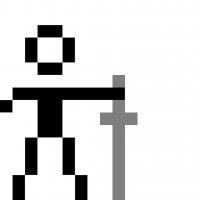19 minutes ago, Scouting Ninja said:It's the same problem as Euclideon
I thought the same. One more problem with Unlimited Detail was they claimed things that never where true.
Recently i've read their patent and surprise: Their algorithm is a regular octree front to back traversal - the same thing i'm using for occlusion culling for more than a decade and i never assumed this to be a new invention. In fact the only thing that's 'new' is their idea to replace a perspective divide by approximizations - this made sense i the 90s when divisions where expensive.
So, no new revolutionary algorithm, of course no unlimited detail and no replacement for game engines.
Now, looking at automontage.com i see similar claims:
'Meshes only model surfaces - a hollow and thus very incomplete approximation of reality'
What? Why processing volume if all we can see is the surface?
'Mesh content creation is complex and technically demanding; costly with high barriers of entry'
Ah... so poking out holes with a spherical brush is better than shaping by dragging vertices?
'Many layers of “hacks” (e.g. UVs) make editing and distributing mesh assets cumbersome'
Yep - decoupling material from surface is surely a very bad thing - it allows to share data and saves work, but it is complex, so it must be bad.
All their arguments are wrong and the exact opposite is true.
Personally i think polygons are a very efficient way to aproximate surface. Voxels can never get there. We can improve the efficiency of polys too with better topology and by adding dispalcement mapping to get the same detail with less memory. We can make polygons volumetric by using polycubes or hexagonal remeshing etc. - this stuff is hard and did not made it into games yet, but it will, and it will be more flexible and efficient than voxels in regular grids.
But that's just my personal opinion. What makes me sad is how they degrade their own good work with such ridiculous claims to attract foolish investors.
Back on topic, the problem with marching cubes / tetras, dual contouring es the bad topology they produce. Too much vertices for a too bad shape. Hardware is powerful enough to deal with this, but we could improve here, and that's what i'm currently working at (but for completely different purpose and usecase).
So, we could take the 'bad' output of those algorithms and remesh it to something good. E.g. using something like this, which is quite fast: https://github.com/wjakob/instant-meshes
Personally i have harder requirements, i need a pure quads low poly approximization with as few unregular vertices as possible (quadrangulation problem). I did not think this could be realtime, but after implementing something close to this paper: https://www.graphics.rwth-aachen.de/media/papers/campen_sa2015_qgp_medium.pdf, i see it would be probably fast enough for user generated ingame content. Further this allows seamless texturing, so proper displacement mapping as well, plus smooth lod transitions as seen in voxel engines. I see a big future for this stuff in games even beyond current applications where we consider marching cubes.









